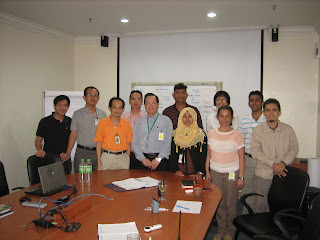Californian Chemistry Plan May Have Big Impact
22 December 2008 11:04 am GMT
If the California Green Chemistry Initiative recommendations, which have the support of Governor Arnold Schwarzenegger, became a reality, it will change the way manufacturers do business in that state and likely across the United States.
The reason? The recommendations, unveiled this month after an 18 month study, call for:
* Full disclosure of chemical ingredients in products.
* Requiring companies that sell products in California to disclose the environmental footprint of products from cradle-to-grave.
* Giving the state the authority to require companies to do an analysis of alternative materials that can be used for a product.
* Changing the enforcement approach of the state from managing waste to working with manufacturers at the design level to develop green products.
* An online product ingredient network to disclose chemical ingredients in products, while protecting trade secrets.
"We have drafted legislation to implement part of our recommendations, while others can be done through executive order," said Maureen Gorsen, director of the state Department of Toxic Substances Control, during a call-in teleconference to discuss the recommendations.
"We will have the authority to ban the sales of products in California," Gorsen said. "We will require manufacturers to tell us what is in their products and what were the other alternatives they could used that would be safer. We will require companies to find safer, greener alternatives at the design and manufacturing stages.
"I don't know of any other government that has that authority,"” Gorsen said. "“The federal government has not required ingredients disclosure for all products. Now, for the first time, we will know what is in products — and not just those made in California, but everything sold in California."
The report from the Green Chemistry Initiative task force said that 644 million pounds of chemicals are sold daily in California. "With approximately 100,000 different known toxic chemicals used in production today, a comprehensive approach is needed to reduce or eliminate the use of these chemicals," said the report.
Gorsen said that the state intends to shift its enforcement approach from managing waste to design, manufacturing and distribution and require companies to evaluate their entire “environmental footprint” before they make and sell a product.
Linda Adams, secretary of the California Environmental Protection Agency, agreed.
"Rather than managing wastes at the end of a product’s lifecycle, Green Chemistry shifts our focus to designing chemicals, processes and goods that have little or no adverse effects during the manufacturing, use and disposal of a product."
The approach contrasts sharply to that of the REACH program in Europe, which requires manufacturers and importers to provide tests and information that show they have identified and evaluated the health risks of the substances they manufacture and market.
"This is looking at what is better, what is safer and how do we invent that safer and healthier material through research and development and technology innovation" instead of controlling exposure to chemicals and managing toxic waste, Gorsen said. "The plan is a move away from traditional risk assessment. We want to create a system that accelerates our move to safer choices, rather than argue and equivocate about how bad is bad."
Richard Denison, a member of the Green Chemistry Initiative's science advisory panel, said the report contains many of the key building blocks "that can move us to the kind of fundamental reform we need in how we design, make, use and manage chemicals across their lifecycles." Denison is also a senior scientist at the Environmental Defense Fund.
Schwarzenegger applauded the recommendations in a statement released to the press.
“These recommendations usher in a new era of how we look at household products — from our children's toys to the plastic we use to make shampoo bottles to the varnish on our wood furniture,” Schwarzenegger said. "Instead of paying attention to the toxic substances in our everyday products only when it comes time to throw them away in the landfill, we will now pay attention to those substances every step of the way — from when the product is designed, manufactured, used and recycled."
The Green Chemistry Initiative was put in place by Schwarnegger to develop a science-based approach to chemicals in products rather letting policy develop piecemeal through the legislature. California previously had banned the use of phthalates in toys and child care items intended for children under three. That ban goes into effect on 1 January.
The initiative was given further impetus when the California legislature passed two green chemistry bills in September that require the state Department of Toxic Substances Control to develop a process to evaluate and regulate chemicals. That action was applauded the chemical industry because it takes the decisions on chemicals out of the hands of legislators and puts it into the hands of scientists.
The bills gave DTSC the authority to impose labeling and information requirements, manage what happens to a product at the end of its useful life, fund green chemistry initiatives and ban, restrict the use, control access or limit exposure to chemicals.
When evaluating chemicals, DTSC will be required to prepare a lifecycle evaluation for review by the Environmental Policy Council. The evaluations, at the minimum, must address the impact of the chemicals on worker safety, public health, the environment, air pollution, surface water contamination and disposal.
They also gave the state's environmental policy control new power, created a science advisory panel to advise the council and required the state to develop and maintain an online clearinghouse to give the public access to information on the toxicity of chemicals, and to establish a process by 1 January 2011 to identify and prioritize chemicals that might be of concern.
Gorsen said the clearinghouse of data on chemicals will be "a Facebook for chemicals" that will allow scientists and consumers to post information about toxic chemicals.
The recommendations in the Green Chemistry Initiative also call for:
* Incentive programs to assist California businesses to adopt green chemistry and engineering practices.
* Establishment of green chemistry technology centers.
* Expansion of state pollution prevention and product stewardship programs.
* The addition of green chemistry to public school curriculums.
* Green chemistry workforce education and training.
* Development of green metrics and tools



















































.jpg)
.jpg)



.jpg)
.jpg)
.jpg)
.jpg)
.jpg)
.jpg)
.jpg)
.jpg)
.jpg)
.jpg)
.jpg)
.jpg)
.jpg)
.jpg)
.jpg)
.jpg)
.jpg)
.jpg)












































